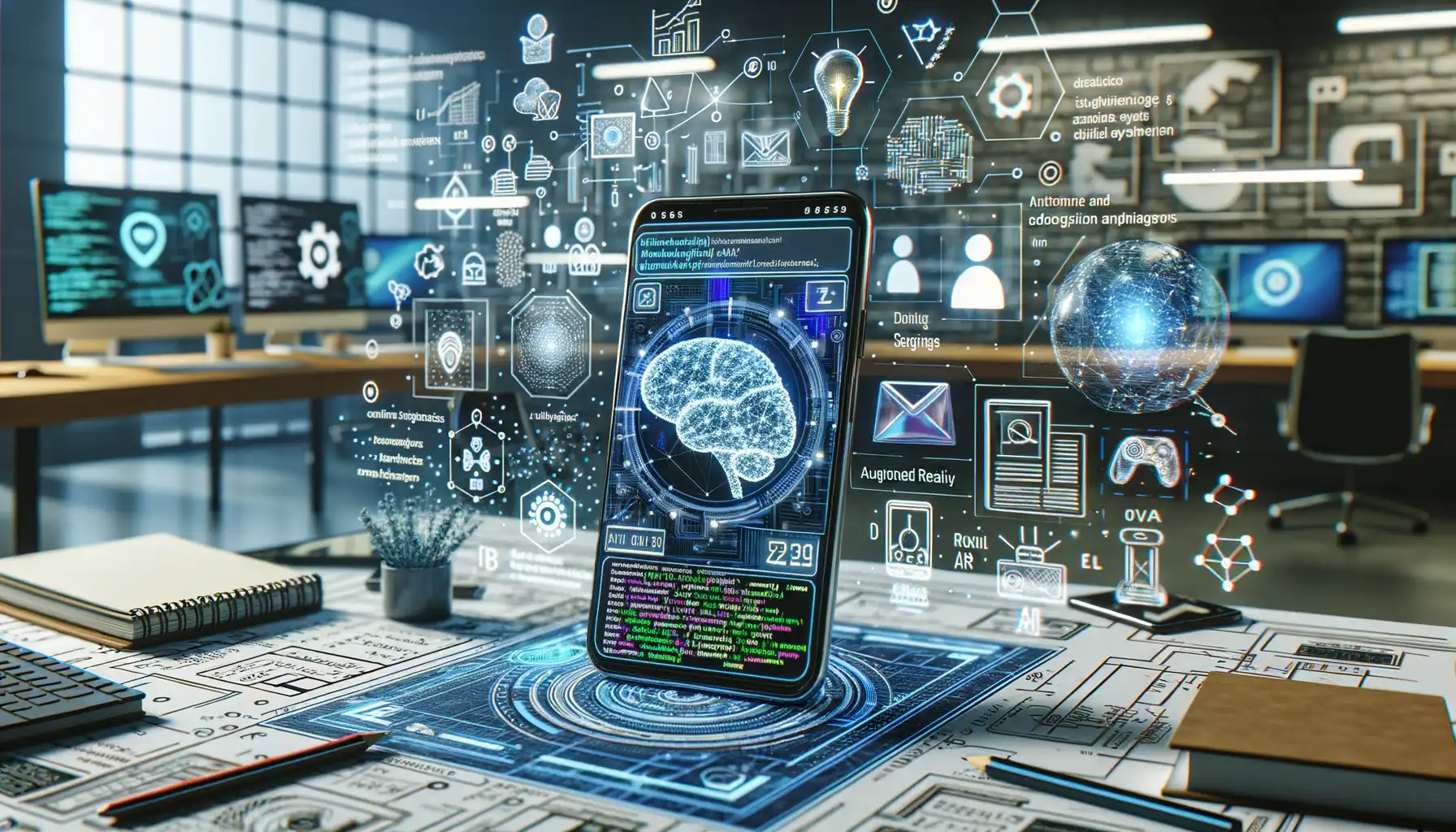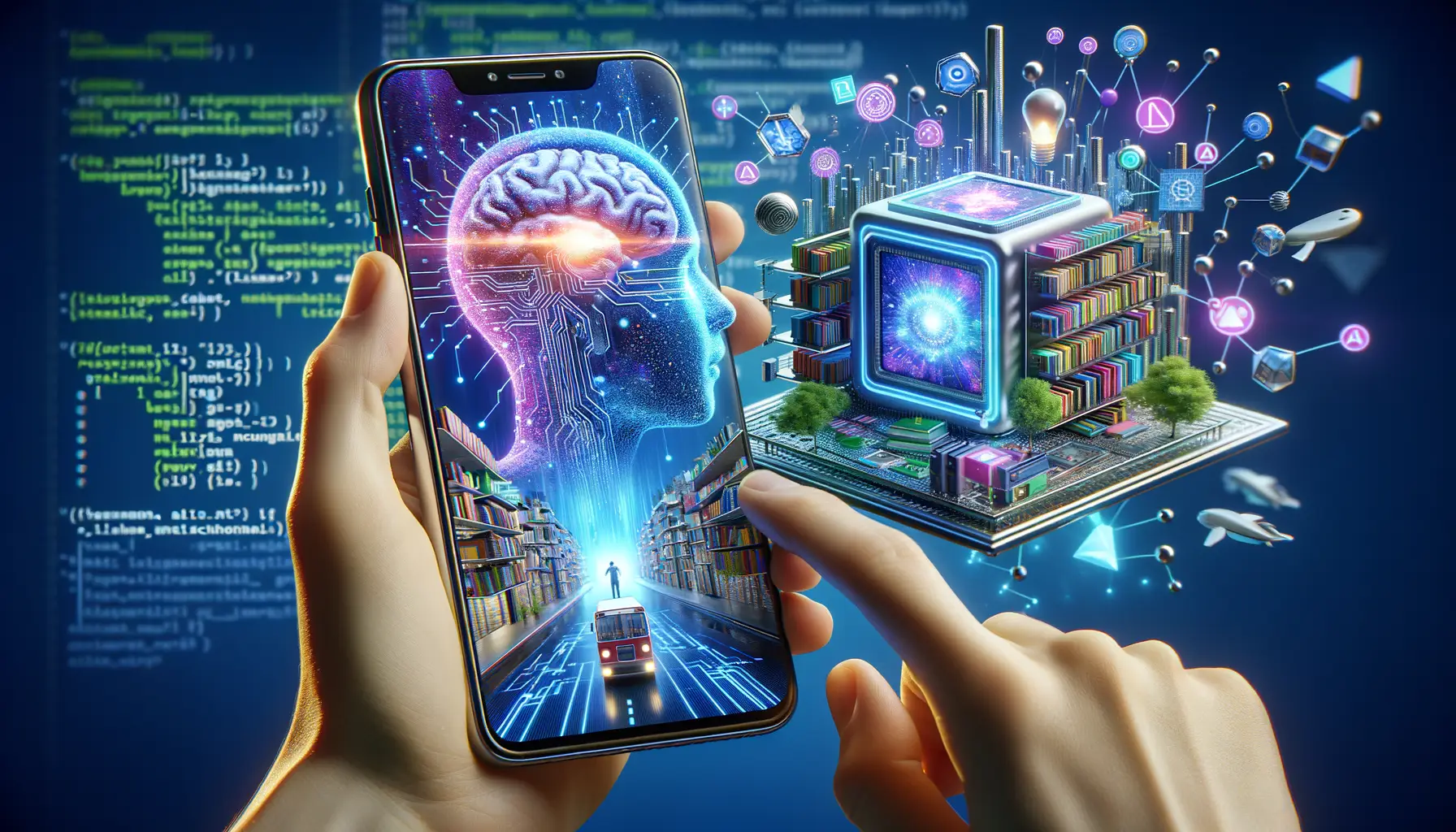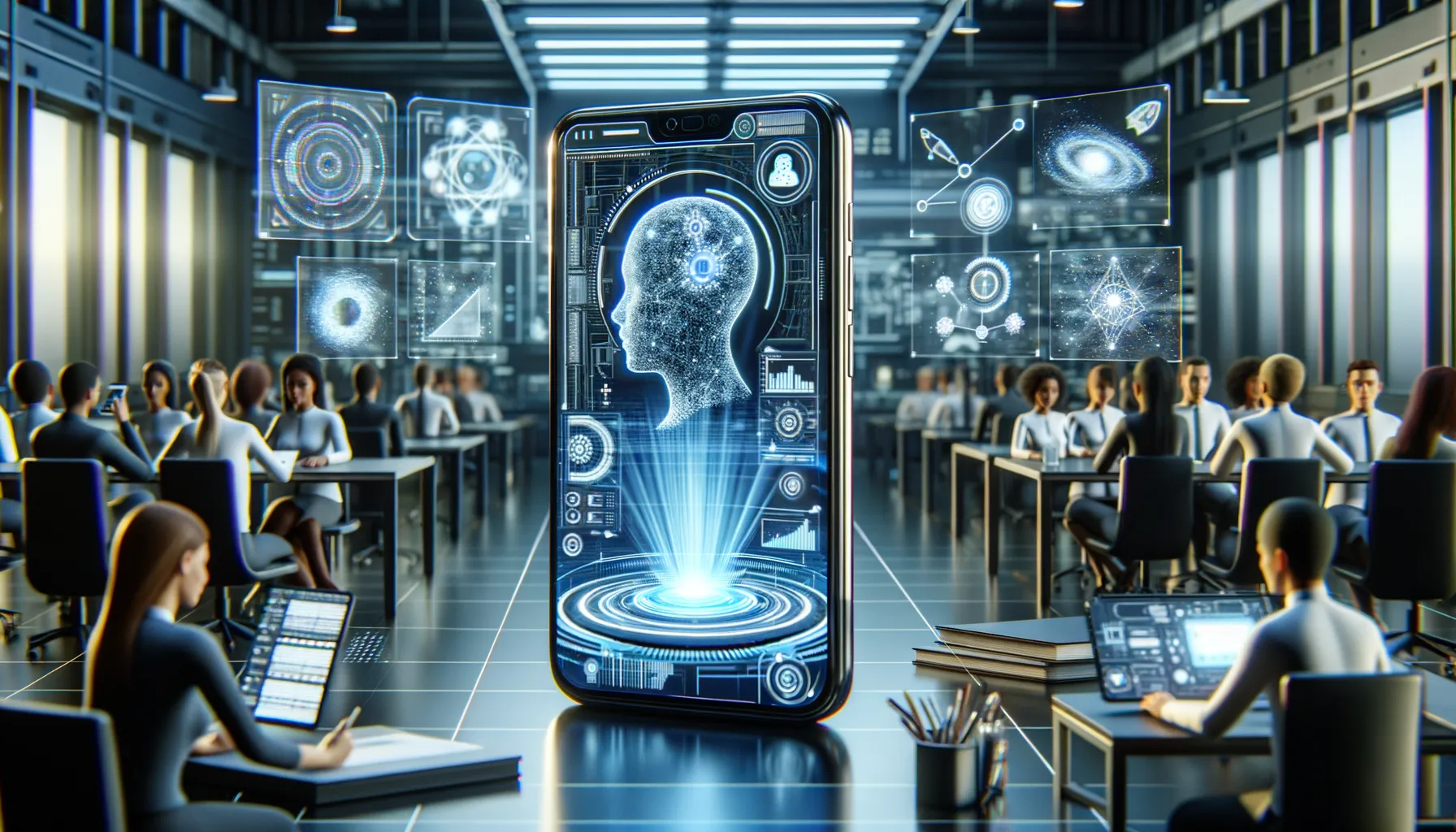The Intersection of AI and Augmented Reality in App Development
Where Innovation Gets Real: AI Meets AR
Picture this: you’re walking down the street, phone in hand, and an app overlays the perfect path to your destination while also offering real-time recommendations for coffee shops based on your mood. This seamless blend of the virtual and real-world experience? That’s what happens when AI and AR join forces in app development.
At its heart, this intersection is all about creating apps that can anticipate *and* respond to user needs with uncanny accuracy. Artificial Intelligence serves as the brain, analyzing user behavior and feeding contextual insights, while Augmented Reality acts as the stage, transforming ordinary environments into interactive digital landscapes.
Ever used a furniture placement app that lets you “drop” a couch into your living room? AI ensures the proportions are accurate and lighting matches your space, while AR makes it appear so tangible you might try to sit on it. But this tech partnership isn’t just about convenience; it’s about creating experiences that feel both intuitive and magical.
- Personalized storytelling: Imagine AR games powered by AI that adapt storylines based on how you play.
- Enhanced education: Apps could use facial recognition AI to read emotions and adjust AR lessons accordingly.
This isn’t just tech; it’s a revolution waiting to happen in the palm of your hand.
Cutting-Edge Strategies for Using AI and AR in Mobile Apps

Transforming User Experiences with AI and AR Synergy
Imagine opening a mobile app and stepping into a world where your every need is anticipated, your preferences are understood, and your surroundings are augmented in real-time. This is the magic created when Artificial Intelligence (AI) meets Augmented Reality (AR). Together, they’re not just enhancing apps—they’re reimagining what’s possible.
Picture this: you open a fashion app, and instead of scrolling through endless outfits, your camera scans your body, and an AI-driven AR fitting room shows you how different clothes would look on you. The app doesn’t just recommend styles—it learns from your past choices, refines them, and tailors suggestions uniquely to you.
Here are some standout methods developers are deploying to harness this incredible pairing:
- Visual Search Revolutionized: Combine AI object recognition with AR overlays to let users point their camera at almost anything and get instant information or purchasing options.
- Interactive Tutorials: Apps integrate AR with natural language processing to offer hands-on learning, like guiding you step-by-step through assembling furniture or cooking a meal.
Predictive Technology Meets Immersive Worlds
One of the most exciting strategies lies in predictive personalization. Think about gaming apps—environments can now change dynamically based on how a player interacts. AI tracks user behavior, predicts preferences, and AR generates real-time adjustments, making experiences feel alive.
The potential isn’t restricted to entertainment. Take health and fitness: imagine an app that uses AR to guide your yoga poses while AI monitors your form and progress, offering detailed insights only a personal trainer could provide. Together, AI and AR transform routine activities into something extraordinary.
Benefits of Integrating AI and AR into Mobile Applications

Transforming User Experiences with AI and AR
Have you ever wondered what makes an app go from “useful” to downright magical? The secret often lies in integrating cutting-edge technologies like Artificial Intelligence (AI) and Augmented Reality (AR). Together, they create experiences that feel personal, immersive, and even a little futuristic—think of it as the digital world colliding spectacularly with our own.
Picture this: You’re decorating your living room. Instead of relying on your imagination (or those clunky paper catalogues), AI-powered AR apps analyze your space and let you see that stylish new couch or gallery wall in real-time, right in your home. It’s not just convenience—it’s problem-solving made beautiful.
Some key benefits include:
- Enhanced personalization: AI learns user preferences and behaviors, making every interaction uniquely tailored.
- Real-world visualization: AR places digital objects into your environment, offering try-before-you-buy magic.
- Instant decision-making support: Imagine trying on clothes virtually or finding the perfect lipstick shade via your phone.
Driving Engagement and Retention Like Never Before
Here’s the thing: People love apps that feel smarter than their expectations. By merging AI and AR, developers are breathing life into otherwise static tools. Take fitness apps, for instance. AI acts as your personal coach, evaluating your form via computer vision, while AR projects a holographic trainer into your living room. It’s like having a gym buddy and instructor rolled into one, minus the awkward small talk.
Beyond that, these technologies boost engagement by gamifying daily tasks. Want proof? Just look at how AI-driven AR games like Pokémon GO got millions of people off their couches and exploring their neighborhoods. That’s the kind of sticky, memorable experience every app dreams of delivering.
Challenges in Combining AI and AR Technology

Bridging Two Powerhouses: The Complexity of Melding AI and AR
Combining AI and AR sounds like a match made in tech paradise, right? But here’s the twist—it’s no walk in the park. Imagine asking two virtuoso musicians to play a duet without ever rehearsing together. That’s what merging these technologies feels like: breathtaking potential wrapped in layers of complexity.
For starters, there’s the matter of real-time processing. AR thrives on visuals—mapping objects, spaces, and movements—while AI crunches through mountains of data to “think” and respond. Syncing these processes without creating noticeable delays is like trying to conduct an orchestra where one section keeps playing a split second behind the other. Even the slightest lag can break the illusion of immersive AR experiences.
Then there’s data. Oh, the data! AI needs training models, whereas AR requires meticulous spatial mapping. How do you balance the two without overwhelming your app’s performance or overloading users’ devices?
- Hardware limitations: Not every device is cut out for the intense workload AI and AR demand.
- Privacy concerns: Both technologies collect vast amounts of user information—ensuring ethical usage adds another layer of complexity.
It’s a balancing act. And while it’s challenging, this intricate dance of AI and AR is precisely what makes its successful integration so exhilarating.
Future Trends in AI and AR for Mobile Application Development

The Rise of Personalized AR Experiences Through AI
Imagine opening a mobile app and seeing a world tailored uniquely for you—this is where AI and AR are heading. With the power of AI-driven personalization, future apps won’t just overlay virtual furniture into your living room. They’ll “know” your tastes, suggesting items that match your style—or even predicting trends you didn’t know you’d love.
Picture an AR shopping app: thanks to AI’s ability to analyze user data, it might tell you, “That sleek chair you loved last month? Here’s one designed perfectly for your current space.” It’s like having a digital interior designer at your fingertips. These hyper-personalized experiences will go beyond novelty and become deeply useful tools.
- Emotionally intelligent AI could adjust AR environments to your mood—for example, soft lighting in a stressful moment.
- Intelligent avatars in fitness or education apps may guide you with real-time coaching based on your progress.
AI-Powered AR That Learns and Evolves
The real game-changer? Apps that don’t just respond but grow smarter over time. Thanks to technologies like machine learning, AR apps are set to become self-taught experts. Think of them as apprentices constantly refining themselves to serve you better.
For instance, an AI-powered virtual personal trainer in an AR interface could study your workout habits, adapt routines to your changing goals, and even predict potential injuries long before you feel them. It’s technological clairvoyance that puts wellbeing first.
And let’s not forget gaming. Future AR games, infused with AI’s adaptive algorithms, might learn how to challenge, entertain, and surprise players in entirely new ways. Every session could feel fresh, alive, and completely unpredictable.
The future of AI and AR in mobile apps isn’t just clever—it’s intimately, almost magically, human.
